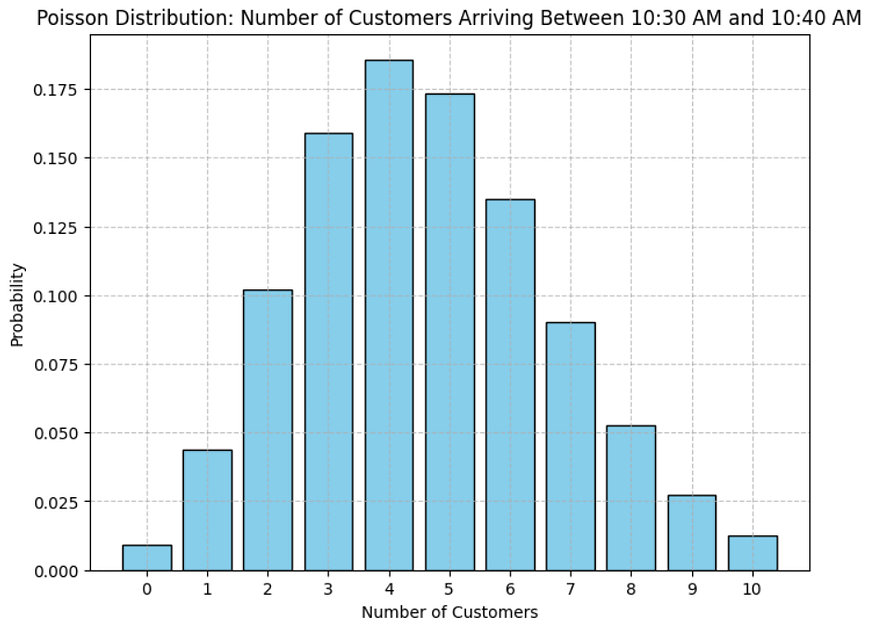
目录
定义
特点
构造函数
常用方法
关于扩容的问题
关于建堆的问题
向上调整和向下调整的比较
(向上调整)代码
(向下调整)代码
关于入队列和出队列问题
模拟实现优先级队列代码
关于堆排序的问题
堆排序代码
关于对象的比较
基于Comparable的比较
基于Comparator的比较
定义
在Java中,PriorityQueue 是一个基于优先级堆的无界优先级队列。优先级队列的元素按照其自然顺序进行排序,或者根据构造队列时所提供的 Comparator 进行排序,具体取决于所使用的构造器。PriorityQueue 不允许 null 元素。
PriorityQueue默认是小根堆。
特点
1.无界:PriorityQueue 可以根据需要动态增长以容纳任意数量的元素。
2.基于优先级:队列中的元素按照优先级进行排序。元素的优先级可以是其自然顺序(对于实现了 Comparable 接口的元素),或者根据构造时提供的 Comparator 来确定。
3.不允许 null 元素:尝试添加 null 元素到 PriorityQueue 会抛出 NullPointerException。
4.非线程安全:如果多个线程同时访问一个 PriorityQueue 实例,并且至少有一个线程从结构上修改了队列,那么它必须保持外部同步。
为什么PriorityQueue不能够插入null对象?下面我们看一下源码:

构造函数
1.PriorityQueue():创建一个默认初始容量的 PriorityQueue,其元素将按照其自然顺序进行排序。
2.PriorityQueue(int initialCapacity):创建一个具有指定初始容量的 PriorityQueue,其元素将按照其自然顺序进行排序。
3.PriorityQueue(Collection<? extends E> c):创建一个包含指定集合元素的 PriorityQueue,其元素将按照其自然顺序进行排序。
4.PriorityQueue(int initialCapacity, Comparator<? super E> comparator):创建一个具有指定初始容量的 PriorityQueue,并根据指定的比较器对其元素进行排序。
5.PriorityQueue(Collection<? extends E> c, Comparator<? super E> comparator):创建一个包含指定集合元素的 PriorityQueue,并根据指定的比较器对其元素进行排序。
常用方法
1.boolean add(E e):将指定元素插入此优先级队列。
2.E poll():检索并移除此队列的头,即在此队列中优先级最低/最高的元素。如果此队列为空,则返回 null。
3.E peek():检索但不移除此队列的头;如果此队列为空,则返回 null。
4.int size():返回队列中的元素数量。
5.boolean isEmpty():如果此队列不包含任何元素,则返回 true。
6.void clear():移除此队列中的所有元素。
关于扩容的问题

通过源码我们了解到,当容量小于64的时候,每次扩容只增加两个空间;当容量大于64的时候,每次扩容是1.5倍扩容。
并且,定义了一个常量值MAX_ARRAY_SIZE=MAX_VALUE-8,当计算后得到的新容量溢出时会抛异常OutOfMemoryError;当计算后得到的新容量大于MAX_ARRAY_SIZE时,新容量设置为MAX_VALUE。
关于建堆的问题
因为优先级队列是基于堆实现的,因此要想实现优先级队列,必须先实现建堆。
那么建立大根堆还是小根堆呢?需要根据实际需要来决定建立大根堆还是小根堆。
向上调整和向下调整的比较
那么建堆的时候使用“向上调整算法”还是“向下调整算法”呢?
下面我们分析一下二者的时间复杂度:
向下调整算法:时间复杂度为N

向上调整算法:时间复杂度为N*logN

显然,使用“向下调整”比“向上调整”更好。
(向上调整)代码
private void shiftUp(int child) {int parent = (child-1)/2;while (child > 0) {if (elem[child] > elem[parent]) {swap(child,parent);child = parent;parent = (child-1)/2;} else {break;}}}private void swap(int i,int j) {int tmp = elem[i];elem[i] = elem[j];elem[j] = tmp;}(向下调整)代码
private void shiftDown(int parent, int usedSize) {int child = (2*parent)+1;//左孩子下标while (child < usedSize) {if(child+1 < usedSize && elem[child] < elem[child+1]) {child++;}//child一定是 左右孩子最大值的下标if(elem[child] > elem[parent]) {swap(child, parent);parent = child;child = 2*parent+1;}else {//已经是大根堆了break;}}}private void swap(int i,int j) {int tmp = elem[i];elem[i] = elem[j];elem[j] = tmp;}关于入队列和出队列问题
策略:
针对入队列:将要插入的元素放到堆尾,然后对该位置进行“向上调整”即可;
针对出队列:将要删除的元素(即堆顶元素)和堆尾元素进行交换,然后把队列的大小-1,然后从堆顶进行“向下调整”即可。
模拟实现优先级队列代码
public class TestHeap {private int[] elem;private int usedSize;public TestHeap() {this.elem = new int[10];}public void initHeap(int[] array) {for (int i = 0; i < array.length; i++) {elem[i] = array[i];usedSize++;}}public void createHeap() {for (int parent = (usedSize-1-1)/2; parent >= 0 ; parent--) {shiftDown(parent,usedSize);}}private void shiftDown(int parent, int usedSize) {int child = (2*parent)+1;//左孩子下标while (child < usedSize) {if(child+1 < usedSize && elem[child] < elem[child+1]) {child++;}//child一定是 左右孩子最大值的下标if(elem[child] > elem[parent]) {swap(child, parent);parent = child;child = 2*parent+1;}else {//已经是大根堆了break;}}}private void swap(int i,int j) {int tmp = elem[i];elem[i] = elem[j];elem[j] = tmp;}public void offer(int val) {if(isFull()) {this.elem = Arrays.copyOf(elem,2*elem.length);}this.elem[usedSize] = val;//usedSize=10//向上调整shiftUp(usedSize);usedSize++;}private void shiftUp(int child) {int parent = (child-1)/2;while (child > 0) {if (elem[child] > elem[parent]) {swap(child,parent);child = parent;parent = (child-1)/2;} else {break;}}}public boolean isFull() {return usedSize == elem.length;}public int poll() {int tmp = elem[0];swap(0,usedSize-1);usedSize--;shiftDown(0,usedSize);return tmp;}public void heapSort() {int end = usedSize-1;while (end > 0) {swap(0,end);shiftDown(0,end);end--;}}
}关于堆排序的问题
上面我们分析了“向上调整”和“向下调整”的时间复杂度,我们知道“向下调整”优于“向上调整”,下面将使用“向下调整”来实现堆排序。
实现堆排序的步骤:
1.首先建好堆
2.其次定义一个变量end标记最后一个元素的位置
3.然后交换堆顶和堆尾的元素
4.然后对堆顶位置进行向下调整,end--;
5.重复执行步骤3,4,5,直到end=0
堆排序代码
public void heapSort() {int end = usedSize-1;while (end > 0) {swap(0,end);shiftDown(0,end);end--;}}private void shiftDown(int parent, int usedSize) {int child = (2*parent)+1;//左孩子下标while (child < usedSize) {if(child+1 < usedSize && elem[child] < elem[child+1]) {child++;}//child一定是 左右孩子最大值的下标if(elem[child] > elem[parent]) {swap(child, parent);parent = child;child = 2*parent+1;}else {//已经是大根堆了break;}}}private void swap(int i,int j) {int tmp = elem[i];elem[i] = elem[j];elem[j] = tmp;}关于对象的比较
基于Comparable的比较
对于自定义类型,如果要对其进行比较,需要实现Comparable的compareTo方法。
代码示例
public class Person implements Comparable<Person> { private String name; private int age; // 构造器、getter和setter省略 @Override public int compareTo(Person o) { return this.age - o.age; // 以年龄为基准进行比较 }
} // 使用示例
Person p1 = new Person("Alice", 30);
Person p2 = new Person("Bob", 25);
System.out.println(p1.compareTo(p2)); // 输出正数,因为p1的年龄大于p2基于Comparator的比较
对于自定义类型,如果要对其进行比较,需要实现Comparator的compare方法。
代码示例
import java.util.Comparator; public class Person { private String name; private int age; // 构造器、getter和setter省略 // 使用Comparator进行比较 public static Comparator<Person> byName = new Comparator<Person>() { @Override public int compare(Person p1, Person p2) { return p1.getName().compareTo(p2.getName()); } }; // 或者使用Lambda表达式(Java 8+) public static Comparator<Person> byAge = (Person p1, Person p2) -> Integer.compare(p1.getAge(), p2.getAge());
} // 使用示例
Person p1 = new Person("Alice", 30);
Person p2 = new Person("Bob", 25);
System.out.println(Person.byName.compare(p1, p2)); // 按名字比较
System.out.println(Person.byAge.compare(p1, p2)); // 按年龄比较


















